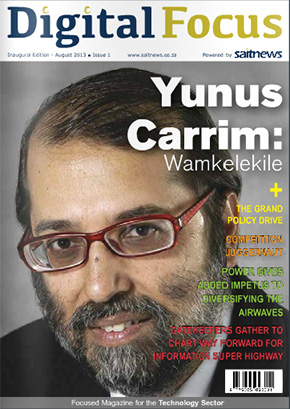The mashup of stuff
Each of these "stuff" elements has been important in the past, but now more so than ever and in a more integrated and "mashed up" manner, says Clive Brindley.

Business functions are experiencing change all possible because of an integrated ecosystem of “stuff”, supporting the modern application lifecycle.
I was recently asked by a friend about what was happening at work and specifically the IT industry.
I normally respond to such requests with purpose and no hesitation. But this time he got me, because there I was trying to figure out what to say. Not that I did not have anything to say, I just had too much to say.
The reality is that there is so much happening in the IT industry that it is difficult to know where to start. I told him: “Kev, it’s a mashup of stuff”. So, what do I mean by this?
Let’s unpack the obvious ones. SOA, cloud, enterprise architecture, agility, mobility… The list goes on. Then we must analyse why this “stuff” is important - why do we actually care about the mashup, as I call it. Fundamentally speaking it is because this is the stuff that allows business to make things happen. We often talk about business agility, listening to what the business drivers are and making IT relevant in a very new and increasingly competitive landscape.
Each of these “stuff” elements has been important in the past, but now more so than ever and in a more integrated and “mashed up” manner. Let me offer an example. Imagine you finished a meeting with the business and left the room with a clear directive. The CIO to Brindley: “I expect the new functionality in three weeks, no delays and with all the requirements fully realised.”
So we are talking about the rollout of a new application functionality, quick, on time, secure and ultimately meeting all business requirements. So you walk to your enterprise architects and start the discussion, think about the services that you will re-use, build and integrate with. Thanks to your SOA governance strategy and platform, this is easy to obtain and soon you are well on the way to understanding the impact of change to the application architecture, SLA’s, service request and the like. You have a full view of the various gates as you move through the Software Development Life Cycle. You document the business requirements in your application governance solution, synching the business analysts, developers and quality engineers. This allows for agile development and faster releases of required functionality, the right people scrumming together to get the job done. They are all working from common systems of record.
The developer accesses his lab management solution to access his infrastructure services, deploys three virtual servers pre-configured with the required application configuration and starts testing, fixing and then testing again. One week later all the required work is done and the subscription to the cloud service is terminated. Final application testing happens on the mobile device including IOS, Android, Windows and more. The application is tested for performance and stressed to accommodate 10 000 online users, all from the very same integrated application quality assurance platform. This, by the way, occurred on a separate cloud platform that the QA team use - due to the immediate nature of the business requirement, an external service provider was used.
Oh, I forgot to mention that the new code was loaded into the cloud to be tested for application vulnerabilities. 24 hours later critical security defects are identified and the developers know what to fix, or else bad things might happen and all that new sexy functionality will be pretty much irrelevant. Functionality, check. Performance, check. Security, check.
Initiate the change management request, provide the relevant data for impact analysis, appease the change management gods and we’re ready to go. There you have it, zero to 300km/h in no time. All possible because of an integrated ecosystem of “stuff”, supporting the modern application lifecycle.
It is simply not good enough for these acronyms to live in silos, they all have purpose but nothing like when they come together to support the promise that Brindley made at the beginning of the story. The response went something like this: “No problem boss, this will be an easy one to deliver. I would like to get a game in next week, tee off at 9am?”
by Clive Brindley, Solutions Architect, HP Software, South Africa










